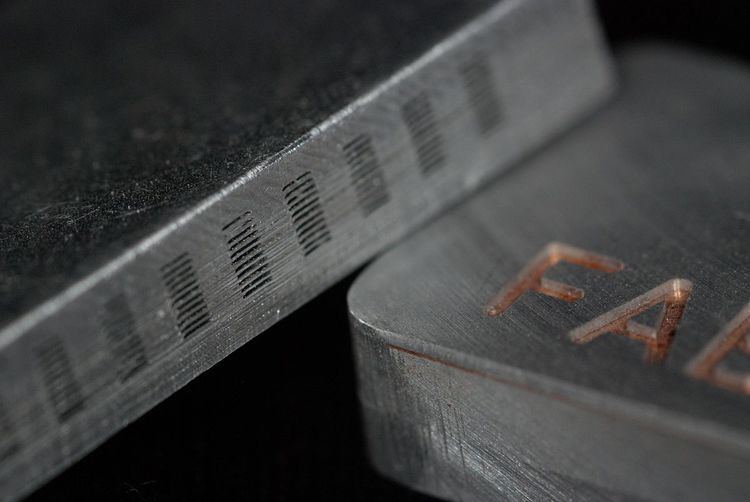 | ||
Ultrasonic Consolidation (UC) or Ultrasonic Additive Manufacturing (UAM) is a low temperature additive manufacturing or 3D printing technique for metals.
Contents
The process works by scrubbing metal foils together with ultrasonic vibrations under pressure in a continuous fashion, i.e., sheet lamination classification in additive manufacturing. Melting is not the formation mechanism. Instead, metals are jonined in the solid-state via disruption of surface oxide films between the metals, i.e. ultrasonic metal welding mechanisms. CNC contour milling is used interchangeably with the additive stage of the process to introduce internal features and add detail to the metal part. UAM has the ability to join multiple metal types together, i.e., dissimilar metal joining, with no or minimal intermettalic formation and allows the embedment of temperature sensitive materials at relatively low temperature—typically less than 50% of the metal matrix melting temperature.
History
The Ultrasonic Consolidation or Ultrasonic Additive Manufacturing process was invented and patented by Dawn White. In 1999, White founded Solidica Inc. to sell commercial UAM equipment—Form-ation machine suite. Near 2007, the Edison Welding Institute (EWI) and Solidica began a collaboration to re-design the weld tooling to remedy bond quality limitations and to expand the weldable metals of the process—so called very high power UAM. In 2011, Fabrisonic LLC was formed to commercialize the improved UAM process—SonicLayer machine suite.
Process
As with most other additive manufacturing processes UC creates objects directly from a CAD model of the required object. The file is then "sliced" into layers which results in the production of a .STL file that can be used by the UC machine to build the required object, layer by layer.
The general manufacturing process is:
